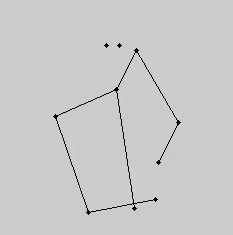Researchers: Voters Prefer the Candidate They Think Is Healthiest

If David Cameron wants to beat Gordon Brown next month, he might want to play a lot of tennis. According to this paper, anyway, gestures and small movements are enough to give people a clear impression of a candidate’s overall health—and he who seems healthiest will get their vote.
It’s another blow to the notion that we know what we are doing when we vote, which has taken a pounding in recent research. In 2008, for instance, Jonah Berger and his colleagues reported that where people vote affects how they vote. In 2009 John Antonakis and Olaf Dalgas recounted experiments in which both adults and children could predict who would win an election just by looking at photographs and saying which person’s face looked most competent. Now Robin Kramer, Isabel Arend and Robert Ward, neuroscientists at Bangor University in the U.K., have found that people’s impressions of politicians’ health is the best predictor of a their vote.
One of the most striking facts they report is just how little information people need to form such an impression. Kramer and colleagues ran two experiments, one comparing Barack Obama and John McCain, the other Brown and Cameron. In both cases, the researchers created simple stick-figure cartoons derived from video of the politicians, and they didn’t tell their volunteers whom they had used to create the clips. To see how much they pared down, take a look at the Obama stick-figure, or the Gordon Brown. (Their Cameron film provided the thumbnail for this post.) They’re so spare they look like diagrams of constellations. Yet none of the 73 volunteers in the experiment appears to have said “I can’t decide how healthy this guy is, he looks like a praying mantis” or anything in that vein. The sight, of dots that suggested eyes and a a few lines that hinted at a torso, was enough information for a human brain to decide that this video represented a person, whose health, sadness, anxiety, trustworthiness and leadership qualities they could perceive.
After rating the figures on these traits and a number of others (including overall health) the volunteers were asked which constellation they would vote for, if asked. Only then did they find out whom they had been watching. Even then they weren’t told which was which: the researchers wanted to see if the viewers could guess. (Not surprisingly, people could tell who was Obama and who was McCain, but many couldn’t distinguish the constellation Cameron from Brown, who are closer in age and height than the two Americans.) A statistical comparison of all this information about the subjects—from political affiliation to general news-awareness to their judgments on traits including leadership and trustworthiness—found that only their sense of each candidate’s health predicted their voting preference.
The authors want to make an evolutionary-psychology parable out of this finding. They argue that people have an innate preference for fit mates and strong friends, and that explains the connection between healthiness and votes. But there’s a problem with this conclusion: People’s judgments about health varied from individual to individual. In other words, while each “voter” in the experiment preferred the candidate who seemed healthiest, opinions differed about who that candidate was. Sane minds can disagree about whether the Gordon Brown stick-figure seems healthier than the Cameron. But these people split on whether the healthier man was a tall guy in his 40’s or a smaller, well-dented character in his mid-70s. Obviously, this experimental protocol has found something interesting about how people perceive “healthiness,” and how that then affects their behavior. But that something sure isn’t actual health.
What, then, might it be? What explains the variation in judgment from one person to another? Is it culture-bound (do gestures that say “health” to some Britons say something else in Singapore)? Beats me, so I hope they do a lot more experiments. Meanwhile, it’s time we started figuring out what to do with the mounting evidence that we, as voters, have no idea what we’re doing.
Want to know more? Here are the papers I’ve mentioned on “non-rational” behavior in voters.
Kramer, R., Arend, I., & Ward, R. (2010). Perceived health from biological motion predicts voting behaviour The Quarterly Journal of Experimental Psychology, 63 (4), 625-632 DOI: 10.1080/17470210903490977
Berger, J., Meredith, M., & Wheeler, S. (2008). From the Cover: Contextual priming: Where people vote affects how they vote Proceedings of the National Academy of Sciences, 105 (26), 8846-8849 DOI: 10.1073/pnas.0711988105
Antonakis, J., & Dalgas, O. (2009). Predicting Elections: Child’s Play! Science, 323 (5918), 1183-1183 DOI: 10.1126/science.1167748![]()





